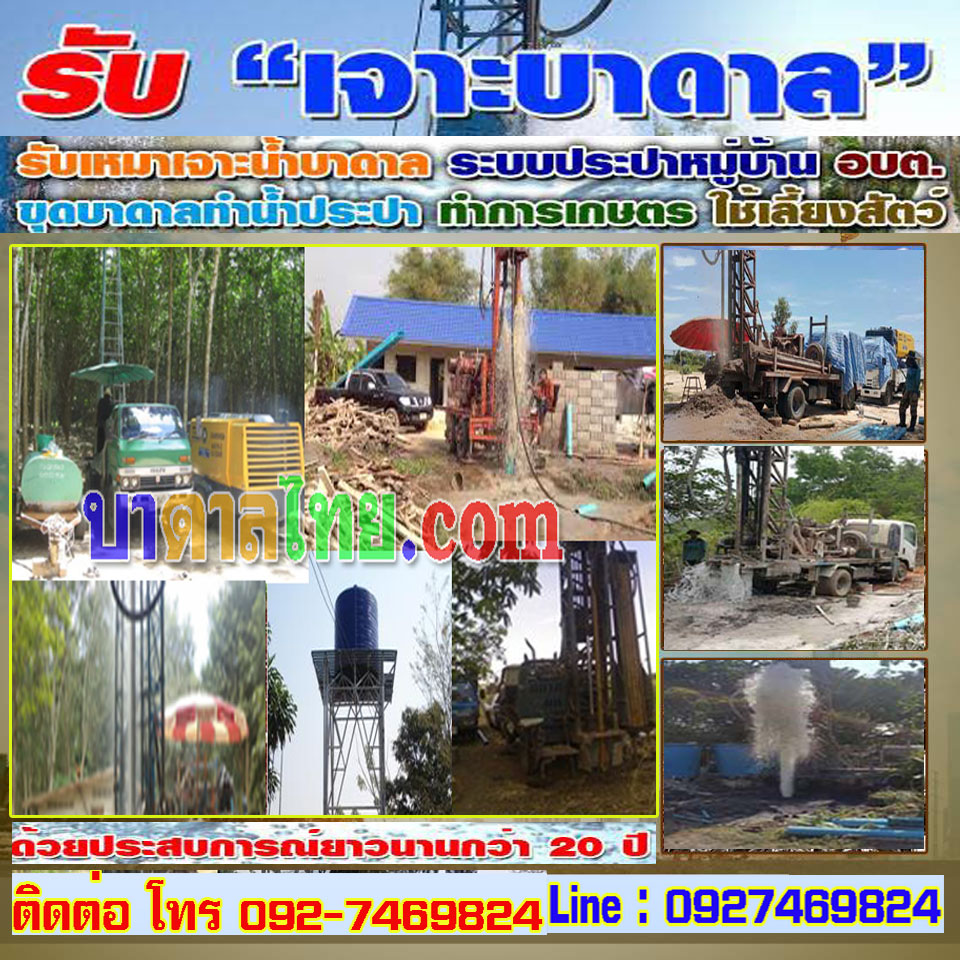
ความแตกต่างของแหล่งน้ำต่างๆ
น้ำบาดาลเกิดจากน้ำผิวดิน ที่ซึมผ่านชั้นดินต่างๆจนไปถึงขั้นดินหรือชั้นหินทีไม่ซึมน้ำ และเกิดการสะสมอยู่ระหว่างช่องว่างของเนื้อดิน โดยเฉพาะชั้นดินเป็นกรวด ทรายหิน ปริมาณของน้ำที่ขังอยู่ในชั้นของดินดังกล่าวจะค่อยๆ เพิ่มปริมาณมากขึ้นในฤดูฝนและลดปริมาณลงในฤดูแล้ง น้ำบาดาลจะมีการถ่ายเทระดับได้เช่นเดียวกับน้ำผิวดิน มนุษย์นำน้ำบาดาลมาใช้ประโยชน์โดยการเจาะบ่อบาดาล
น้ำผิวดิน
หมายถึง ส่วนของน้ำฝนที่ตกลงสู่พื้นดินแล้วไหลลงสู่ที่ต่ำตามแม่น้ำลำคลอง ทะเลสาบ อ่างเก็บน้ำ หนองและบึง น้ำผิวดินนี้จะรวมทั้งน้ำที่ไหลล้นจากใต้ดินเข้ามาสมทบด้วย ดังจะเห็นได้จากลำธารหรือลำห้วยที่มีน้ำไหลอยู่ตลอดปีไม่ว่าจะมีฝนตกหรือไม่ ปริมาณน้ำที่ไหลในลำห้วยหรือลำน้ำ ในระหว่างฤดูแล้ง เป็นน้ำที่สะสมไว้ใต้ดินและซึมซับมาตลอดเวลาที่ฝนไม่ตก การไหลนองบนพื้นดิน ทำให้น้ำผิวดินได้รับความสกปรกจากสิ่งแวดล้อมในรูปต่างๆ กัน น้ำผิวดินอาจมีความขุ่นและสารอินทรีย์สูง ปริมาณเกลือแร่ในน้ำอาจมีมากหรือน้อย
น้ำประปา
น้ำประปา หมายถึง น้ำทีมีคุณภาพเหมาะสมที่จะใช้ดื่มได้อย่างปลอดภัย โดยมีระบบการจ่ายน้ำไปตามเส้นท่อ เพื่อให้ผู้ใช้น้ำได้รับน้ำเพียงพอแก่ความต้องการ คุณลักษณะทั่วไป ของน้ำประปาควรจะมีคลอรีน CI2 อยู่ในน้ำด้วยเสมอ แม้ว่าน้ำประปาจะมีคุณภาพดี มีความใสและสะอาดผ่านกระบวนการปรัปปรุงคุณภาพแล้ว หรือเป็นน้ำประปาที่ผ่านกระบวนการผลิตมาโดยวิธีใดก็ดี จะต้องมีการฆ่าเชื้อโรคด้วยคลอรีน ซึ่งถือเป็นความต้องการขั้นต่ำสุดของการผลิตน้ำประปา ดังนั้น ในน้ำประปาจะมีก๊าซคลอรีนละลายปนอยู่ด้วยเสมอ
Different water sources
groundwater
Groundwater is formed from surface water. That seeps through various soil layers until reaching the soil or rock layers that do not seep water and accumulated between the gaps of the soil Especially the soil layer is gravel, sand, rock, the amount of water trapped in such soil layer will gradually increase in the rainy season and decrease in the dry season Groundwater has the same level of transfer as surface water. Humans make use of groundwater by drilling artesian wells.
Surface water
Refers to the portion of rainwater that falls to the ground and flows into the lowlands along rivers, canals, lakes, reservoirs, swamps and marshes. This can be seen from streams or creeks that have water flowing all year round whether it rains or not. The amount of water flowing in a creek or stream during the dry season It is the water that accumulates underground and is absorbed all the time when it does not rain. Flow on the ground This causes surface water to be contaminated by the environment in various forms. Surface water may have high turbidity and organic matter. The amount of mineral salts in the water may be more or less.
Tap water
Tap water means quality water that is suitable for safe drinking. With a water distribution system along the pipelines so that water users can get enough water to meet their needs General features Tap water should always have CI2 chlorine in the water. Although the tap water is of good quality. It is clear and clean through the quality improvement process. Or is tap water that has been processed by any method It must be disinfected with chlorine. This is considered the minimum requirement of tap water production. Therefore, there will always be dissolved chlorine gas in tap water.
不同的水源
地下水
地下水由地表水形成。渗入各个土层,直到到达不渗水的土层或岩层,积聚在土的缝隙之间,尤其是砂砾、沙子、岩石的土层,会被……困逐渐增加。雨季和旱季减少 地下水与地表水的转移水平相同。人类通过钻自流井来利用地下水。
地表水
是指落到地面并沿河流、运河、湖泊、水库、沼泽和沼泽流入低地的部分雨水。这可以从全年都有水流动的溪流或小溪中看到,无论是否下雨。旱季在小溪或溪流中流动的水量 它是积聚在地下并在不下雨时一直被吸收的水。地面流动 这导致地表水以各种形式受到环境的污染。地表水可能有高浊度和有机物。水中矿物盐的量可多可少。
自来水
自来水是指适合安全饮用的优质水。沿管道设有配水系统,使用水户可以获得足够的水来满足他们的需要 一般特性 自来水中应始终含有 CI2 氯。虽然自来水质量很好。通过质量改进过程清晰明了。或者是经过任何方法处理过的自来水,都必须用氯消毒。这被认为是自来水生产的最低要求。因此,自来水中总会有溶解的氯气。



